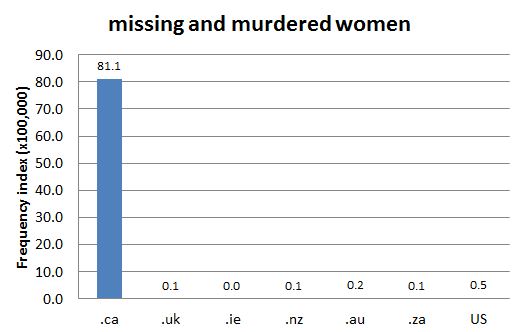DCHP-2
missing and murdered women the missing and murdered women, missing or murdered women DCHP-2 (October 2016)
expression — Ethnicities
women, mostly Aboriginal, whose disappearances or murders have gone unsolved by police.
Type: 6. Memorial — The expression missing and murdered women refers to cases where police have been said to have been negligent in their investigations, either because of a bias against women in the sex trade or Aboriginal women or both. Most of these unsolved cases concern women of Aboriginal ancestry (see the 2009 quotation); thus, the term often appears in the form of "missing and murdered Aboriginal women" (see the 2004 and 2014 quotations). As stated by the Royal Canadian Mounted Police, there is an urgency to "address the fact that Aboriginal women face considerably higher risks of violence and homicide" (see RCMP reference). Accordingly, the Native Women's Association of Canada (NWAC) composed a database solely concerned with missing and murdered Aboriginal women and girls (see the 2014 quotation).
Because these cases connect to large social issues, including sexism and racism, as well as the impact of residential schools and colonization on Aboriginal people, they have generated much debate.
As seen in Chart 1, the term is almost exclusive to Canada.See also: residential school Royal Canadian Mounted Police
References:
- RCMP "Missing and Murdered Aboriginal Women" Accessed 22 May 2014
Images:
Chart 1: Internet Domain Search, 22 May 2014
